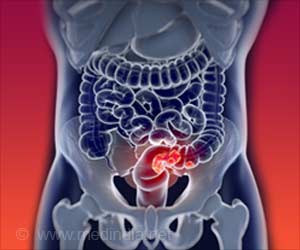
- Time-restricted eating (TRE) showed significant health improvements in metabolic syndrome patients
- TRE aligns food intake with circadian rhythms, optimizing metabolism and health outcomes
- The TIMET study supports TRE as a feasible lifestyle intervention to enhance cardiometabolic health
Decreasing the time of daily food consumption to 10 hours can positively affect such significant aspects of cardiovascular health as blood pressure, lipid profile, and sugar levels, that is the solution for more than one third of the American adults suffering from metabolic syndrome. A study has earlier been conducted to determine how TRE affects metabolic syndrome in adults and published in the Annals of Internal Medicine (1✔ ✔Trusted Source
Time-Restricted Eating in Adults With Metabolic Syndrome: A Randomized Controlled Trial
).
Metabolic syndrome is then a combination of factors that enhance the risks for cardiovascular disease, type 2 diabetes, and stroke. Key risk factors include:
- Elevated blood sugar
- High blood pressure
- High cholesterol
This syndrome is highly dangerous when combined with prediabetes, which adds the risk of developing both type 2 diabetes and heart disease.
The TIMET Study
The TIMET study is the first randomized clinical trial evaluating the effects of a personalized TRE diet in the context of metabolic syndrome participants receiving treatment. The trial involved 108 adult patients from UC San Diego Health, who were divided into two groups: the first group being the one that engages in practicing TRE and the other being a placebo group.
The TRE group restricted their eating time to 10 hours depending on their daily activities’ timetable. The control group consists of the normal care and the Mediterranean diet nutritional consultation. For meal recording, all participants used the myCircadianClock mobile application.
Key Findings
After three months of intervention, significant improvements were observed in the TRE group, including:
- Lower blood sugar levels
- Decreased cholesterol
- Lowered blood pressure, elevated levels of good cholesterol, and prevention of further decline of kidney function reflected in lower creatinine levels
The enhancements of health parameters were as effective as those seen in other intense interventions like the National Diabetes Prevention Program.
Circadian Rhythms and Metabolism
Scientists focused on the necessity of the circadian rhythms—the physical, mental, and behavioral cycles that occur in one day. These rhythms are likely disrupted by eating at the wrong times, therefore developing symptoms of the metabolic syndrome.
This kind of diet simply means that food should be taken at the times when the body is most metabolically active. Among the benefits of this dietary approach are the decrease in patient body weight, BMI, and abdominal trunk fat with modest changes in lean muscle mass.
Advertisement
Implications for Healthcare
These results from the TIMET trial are also supportive of time restricted eating at least for its cardiometabolic benefits as a cheap, easy to apply strategy. Pam Taub, MD one of the co-authors of the study emphasized that the main challenge that currently faces the American populace is finding appealing and sustainable interventions.
They should also make suggestions for time-restricted eating in addition to the current treatment for patients with metabolic syndrome. Promote further studies to define other attainable benefits and to corroborate the effectiveness of TRE in terms of risk reduction of chronic diseases.
Advertisement
The TIMET study provides intriguing initial data to show that time-restricted eating is a feasible lifestyle intervention for people with metabolic syndrome. Sticking to the circadian rhythms of food intake the clients may begin to experience a wide range of changes that can prove rather beneficial for further health in general.
Reference:
- Time-Restricted Eating in Adults With Metabolic Syndrome: A Randomized Controlled Trial – (https://www.acpjournals.org/doi/10.7326/M24-0859)
Source-Medindia



